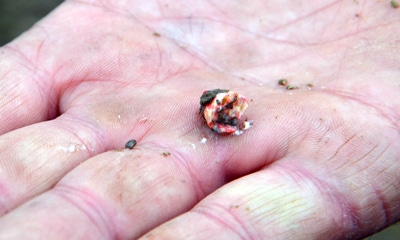
Seed corn planted April 27 in central Indiana didn’t emerge uniformly. However, by mid-May, many parts of the field were rated as a good stand, with other areas rated fair and a few poor. One thing the farmer couldn’t find was that first rotten kernel. He also couldn’t find any signs of plants that had been chewed through or damaged by insects like wireworm. Emergence was not uniform because there were different soil types in the field, and apparently, wetter, cooler soils weren’t emerging as fast.

JUST A MESS: There won’t be any sweet corn from this planting. Every seed appeared to rot after conditions turned cool and wet. Hybrid field corn didn’t show the same weakness.
Four rows of sweet corn planted on the edge of the field on the same date didn’t fare as well. Not only had not one plant emerged by May 15, but the farmer hadn’t found one seed that was even sprouted while digging. In fact, after digging up several seeds, he couldn’t find even one that wasn’t rotten.
Rotten may mean different things to different people. But when you pick up a seed and it becomes mush in your hand, that’s the universal definition of rotten. The seeds not only were mushy, but they also exuded a thick, milky substance. Obviously, bacteria or fungi or both had invaded these seeds and caused seed rot.
Was the seed corn old and low on vitality? Was it too cool for older seed to germinate? Was it just the fact that sweet corn isn’t as vigorous, especially in cool, wet conditions, as hybrid seed corn? Or was it because the hybrid seed corn was treated with seed protectants that weren’t on the sweet corn?
These are questions that can’t be answered after the fact. What is obvious, though, is that there was a distinct difference in how cool, wet weather over a two-week period after planting affected sweet corn vs. hybrid corn. Hybrid corn doesn‘t come with an emergence guarantee, but it is a tough customer — much tougher than a crop like sweet corn, which is apparently more susceptible to poor weather conditions.
About the Author(s)
You May Also Like




